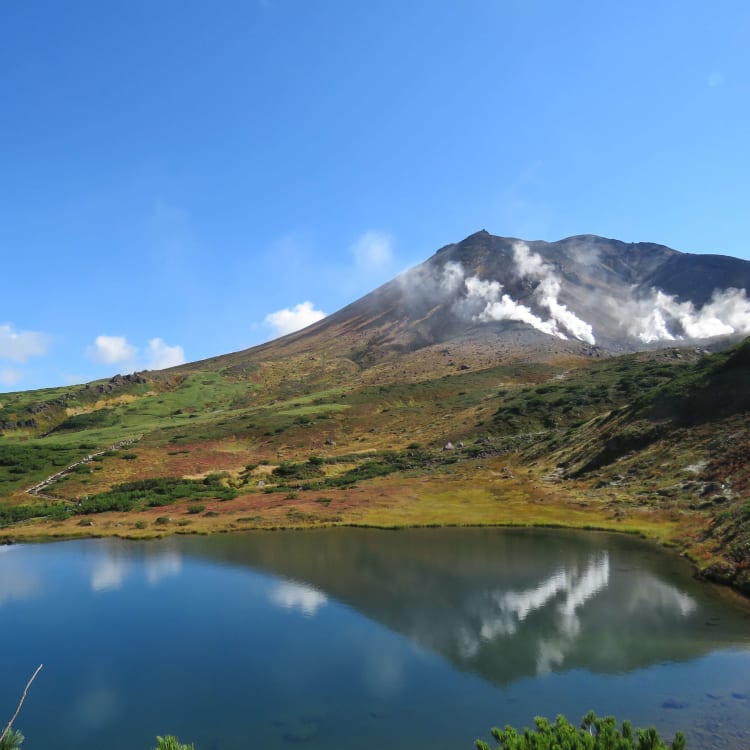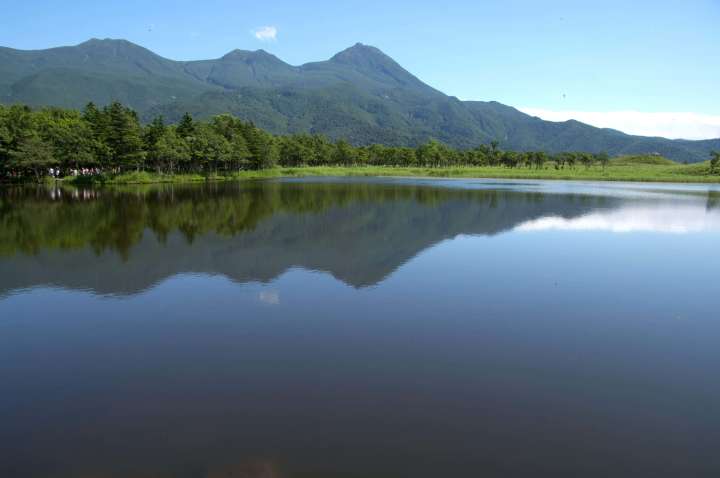
Story Hokkaido: Nature Appreciation by JNTO on 04 January 2018
Hokkaido is famous for its natural beauty – from mountains to peninsulas and thermal parks, the island has plenty to offer.
Asahidake
Located in the centre of Hokkaido, Asahidake (2,290m) is one of the most famous mountains in Japan and is the crown jewel of Daisetsuzan National Park.
Asahidake is popular for hiking, with several trails catering to all levels of hikers. In summer the mountain is decorated with alpine flowers, and many trails pass ponds with sulfurous vents, as the mountain is an active volcano. Hiking season runs from June to September, when it becomes the first place in Japan to experience autumn colors.

From December to early May when dry powder snow hits the slopes, it turns into a popular backcountry ski area that is uniquely punctuated by steaming fumaroles.
Asahidake is accessible at all seasons via the Asahidake ropeway from Asahidake Onsen, a small hot spring village at the base of the mountain.
Shiretoko National Park
Located on the Shiretoko Peninsula in eastern Hokkaido, the Shiretoko National Park is one of Japan’s most beautiful parks. Designated a UNESCO World Heritage site for its biodiversity, it’s known for its brown bears.
From April to November, the most popular site is the Shiretoko Five Lakes which are fed by underground springs and can be explored along an elevated boardwalk. There are also nature trails here – due to their popularity, they are sometimes only accessible via guided tours, and are closed in case of bear sightings.
During this time, sightseeing cruises explore the rugged tip of the peninsula, and is the easiest way to view its dramatic coastline with its cliffs and waterfalls. In addition, brown bears may be spotted on the rocky beaches with their cubs.
In winter, the peninsula’s coast along the Sea of Okhotsk sees the presence of drifting sea ice from Russia, appearing between January and April (the best time is late February). This is when ice walk tours are conducted from the hot spring town of Utoro, where participants in thick wetsuits are led out onto the ice for a walk or swim.

Shikotsu-Toya National Park
Located in southwestern Hokkaido, Shikotsu-Toya National Park is named for its two caldera lakes: Toya and Shikotsu. Ringed by volcanoes, the area offers a spectacular scenery of caldera lakes, onsen towns, and great hiking trails.
Of the two namesake lakes, the more developed is Toya, where hiking trails let you explore the craters of Mt. Usu (which is also accessible via a ropeway) and Mt. Nishiyama, as well as ruins of the town which were the result of an eruption in 2000. Toyako Onsen, located along the lake’s shores, is a popular hot spring resort.
There are also hot spring towns in Noboribetsu and Jozankei. Noboribetsu is Hokkaido’s most famous, known for its variety of water that spews from the spectacular Jigokudani (Hell Valley), a landscape of steaming fumaroles, located just above the town.
























































